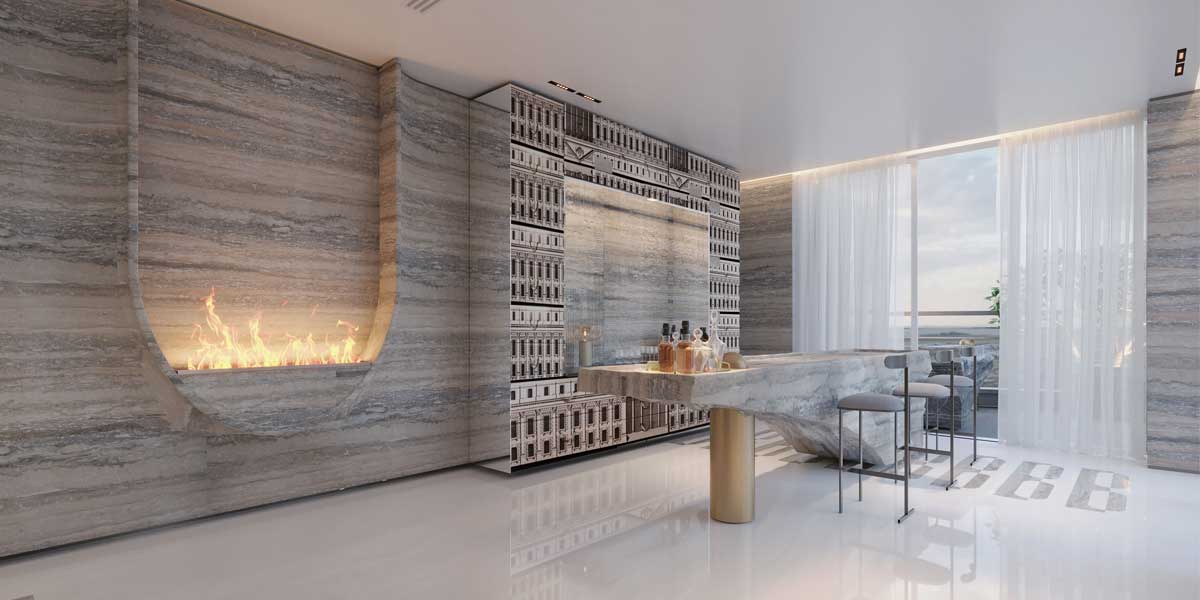

Long appreciated for their high performance and flexibility, advancements in designs, sizes and formats have made tiles a popular choice. CWDB looks at the latest trends and the market.
Available in a host of trendy designs, tiles provide underfoot comfort combined with easy maintenance and hygiene, making them a reliable option for a variety of spaces. This is clearly evident from the growing market size of the tile industry, which is on the path to recovery after a temporary slowdown during the pandemic.
The Indian tile industry is divided into the organised and unorganised sectors. The current size of the organised sector is about Rs 7,200 crore. The unorganised sector accounts for nearly 60 per cent of the total industry, testament to the growth potential of this sector.
Among the different types of tiles, wall tiles account for 50 per cent of market share, followed by floor tiles at 23 per cent, vitrified tiles and industrial tiles. The residential sector dominates the demand generated for ceramic tiles in India with 70 per cent market share, while the rest comes from the commercial and other sectors.
According to CARE Ratings Ltd, tiles have multiple inherent benefits like low maintenance, high durability, affordability and an array of options to choose from. Now, with technological advancements like 3D printing and digital printing, the ceramic tile industry has not only scaled up but launched multiple value-added products like glazed vitrified tiles, polished vitrified tiles, large-size slabs, slim slabs, wall ceramic tiles, etc.
For instance, Ashok Basoya, Founder, Ottimo, says, “We are consistently using digitally printed tiles in residential, commercial and retail projects because they help to create an ambience that looks in sync and complete.”
Tiles are available in a wide variety of designs, textures and surface effects. “As tiles are waterproof, they have been traditionally used in wet areas and were hence more functional than decorative. However, with the wide range of textures and colours now available, they can be used on various wall surfaces to add glamour. Metallic tiles as a backdrop for the television in the living room, denim textured tiles in a teen’s bedroom or colourful handmade tiles on a tabletop in your balcony – you can create endless possibilities,” says Shami Goregaoker, Design Director, GA design.
Apart from the design and texture, a major advantage is that tile is resistant to extreme weather conditions, chemicals, moistures, temperature change, and UV rays. It is also fire-resistant, durable and long-lasting.
The use of nanotechnology has helped in manufacturing antibacterial tiles. The special nano particles in their glaze formula have the ability to kill microbes. Further, these tiles have a photocatalytic nano particle that increases catalytic activity by irradiating light to the surface, producing free hydroxide radicals and free oxygen on the tile surface. This helps decompose organic contaminants, odours and bacteria. These tiles are easy to clean and maintain. In addition, some brands use metal oxide particles to increase the strength of coatings.
In 2022, things are getting even more exciting with an emphasis on large wood-look planks, eye-catching patterns, shapes and designs, and lots of bright new looks. “It is a stylish way to breathe life into your home, with a host of different shapes, colours, prints and patterns,” says Nikhil Agrawal, Founder & Architect, Design Atelier. “Terrazzo in all shapes and colours remains a dominant trend as we enter 2022, no matter if it is a residential apartment or a commercial place, a cafe or a restaurant. When it comes to choosing tiles, terracotta designs are certainly having their moment.”
“Ceramic tiles are a good way to get the marble look without burning a hole in your pocket,” says Shami Goregaoker, Design Director, GA design. “The large format tiles are almost as large as marble slabs and new technology ensures that there is no level variation so your floor looks seamless. Ceramic tiles could be used on floors, walls and countertops as well as on furniture.”
Textured wood look tiles in wire brushed, hand-scraped and distressed wood surfaces are in demand. These make your home look warm, trendy and expensive. Not restricted to the residential segment, these tiles are in demand for commercial and retail spaces.
The marble look is particularly trendy in bathrooms and kitchens. And the concrete and rustic look is a popular choice among professionals for contemporary interior spaces. While warm, rustic looks will be prominent in 2022, there is also demand for the cool, detached look. A rustic wood floor would be perfect for a family home, while a concrete look tile is an awesome touch to a trendy apartment.
Whitewashed looks lend an upscale contemporary feel and are used extensively in commercial, hospitality and hospital spaces. These tiles instantly make the room look bigger, especially if you use large format tiles. And large-format patterned tiles that offer a wallpaper effect take 2021’s trend to the next level. Indeed, digitally printed large ceramic tiles have been gaining popularity as designers find new ways to use them –from covering entire walls and backsplashes to creating a floor design element for an entryway. This is a very economical option to create highlight walls in common areas.
Rising disposable income levels among the working class, increasing trend of nuclear families and demand for housing units and discretionary products from Tier 2 and Tier 3 cities as well as the Government’s thrust on infrastructure development and initiatives like smart cities, Housing for All, Swachh Bharat Abhiyan and Atal Mission for Rejuvenation and Urban Transformation (AMRUT) will continue to bolster the construction industry and, in turn, fuel the growth of the tile industry.